Image above: ©Nicole LaMotte. All images courtesy of the artist.
ANDREA BLANCH: Kate Guadagnino’s Vogue feature on your eighth book, Photographs by Kelly Klein, describes this collection as “a memoir in pictures [that] have an easy, unstudied air... an intimate feel.” How closely does this description match your own perception? How would you describe Photographs?
KELLY KLEIN: Photographs is a very personal book to me. It’s the first book that I’ve done featuring my photographs. It’s the journey of my life, through the last 35 years, through pictures. So, there’re travel pictures, friends and family, still life, fashion, and more. It’s everything that I was inspired by. To put this together, I had to go through my archive and choose a selection of pictures I really loved and hoped would also inspire others. Photographs has elements of romance, simplicity, and since I think of myself as a naturalist when I shoot pictures, there’s not a lot of digital manipulation.
ANDREA: Describe the process of editing your own body of work into the concise canon that is Photographs. How difficult was this process compared to curating images for your other books?
KELLY: Putting this book together was a very different process because it has my images. Over the last six books that I’ve done, I curated a selection of many different photographers’ works, put them together and produced different books. But for this book, I went back into the archives from 35 years ago, through negatives and Polaroids and digital, which I shifted to about eight years ago. It was a difficult and tedious process and took about three years or so to go through all those different collections of work. However, it needed to be done because I needed to know what I had. Doing books is a labor of love. The most difficult part was editing this myself because I have to judge my own work. When you are so close to your own body of work, it’s sometimes hard to choose the best image. That’s where Sam Shahid–my everything when it comes to editing books–comes in. He helps me with everything—editing, designing, choosing. He’s just incredible to work with. There were times when Sam and I didn’t agree on a photograph and would have discussions, but in the end we worked so well together that he trusted my choice and vice versa.
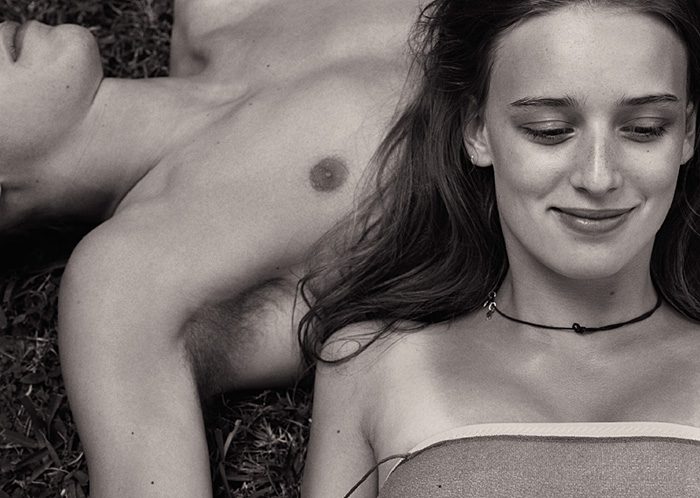
©Kelly Klein. Anne-Catherine Lacroix, Harbour Island, Bahamas, 1998.
ANDREA: The cover of Photographs features you and your companion, the camera, at the 1994 CFDA awards. This March, the NY Post briefly chronicled your efforts tracking down the photographer and a $5K reward offered for this image. When did you decide this had to be the cover image? What does this image mean to you?
KELLY: You know, it was difficult searching for a cover because the book has so much in it. If you put a flower on the cover, it would seem to be a book about flowers. If you put a fashion photograph on it, it would seem to be about my fashion photography. Then I came across this paparazzi picture of me wearing a slip dress—which is something that I’ve always worn, a signature dress for me—and I happened to have carried this camera around with me a lot in the 90s. It was a special edition camera that Olympus made, a snap film camera. I carried it everywhere because it looked great, and you could carry it to a black tie event and it almost looked like a purse. It took probably six months to find it. I called many paparazzi photographers from all over the world searching for this image. Luckily, I knew the venue, year, and date that it took place; but over the years, the Fairchild archives got sold to Vogue, and then Vogue sold it to PMC. All these archives went through two different ownerships over a twenty-year period. That’s why it was very difficult to track down the photographer and the image. But eventually, a friend of mine helped me find this photograph. She just came over one weekend and we started our search. We were able to locate the archives in California, and the photographer happened to be Eric White. In fact, I had approached Eric earlier to ask him if he took the picture and he said he didn’t think so. Turned out six months later that he did. I just think it sums up a bit of my social life over the last 30 years, my work life with the camera, and it keeps the mystery about the book in tact without saying much about what’s inside.
ANDREA: What genre of photography do you feel best describes the thematic style of Photographs (i.e. fashion, documentary)?
KELLY: I guess I’d have to say I shoot what I love. I enjoy and love taking fashion photographs. I don’t work all the time, but when I do, I love it. I love doing travel photography. When I go to interesting places, I’m always taking pictures. I can’t really sum up what I am because I just shoot all the things that inspire me as my day goes by. And now, I feel mixed emotions because I use Instagram, which is a great way of showing fans and friends what you are, what you love, and what inspires you instantly, but there’s not much use for the real camera. That makes me a little sad because I cannot pull out two cameras at the same time when something interests me.
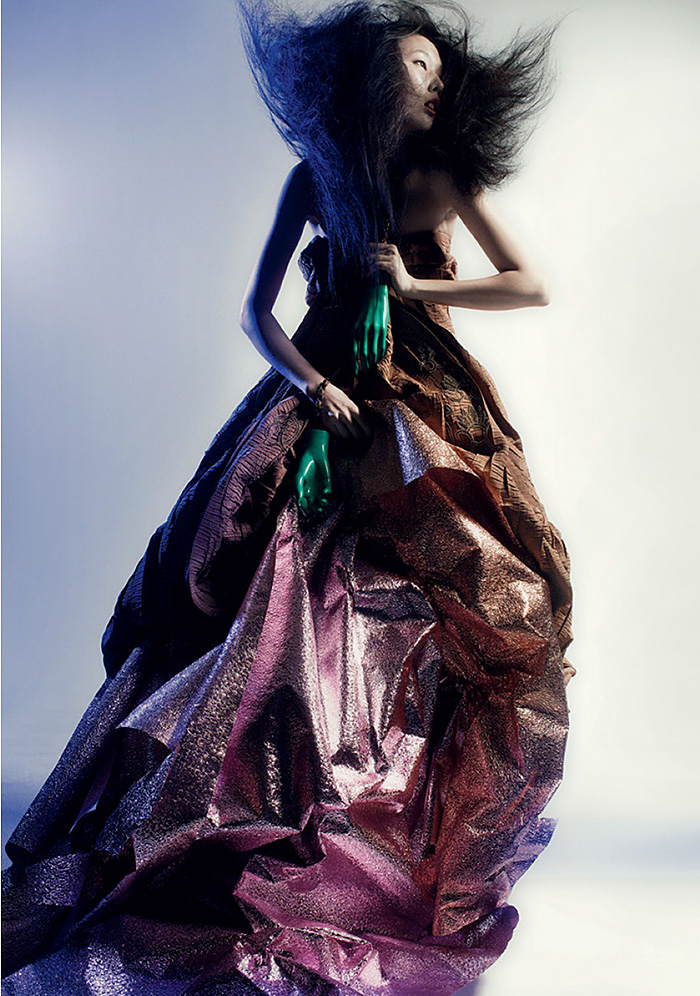
©Kelly Klein. Han Hye Jin, New York City, 2007.
[Check out more wonderful women artists on Musée No. 13]
ANDREA: You have been hailed by many as “an icon of style” in your work and lifestyle. What does it mean to you to carry this title?
KELLY: I don’t think I have a particular style. I just know what I like—whether it’s decorating or designing a house, or doing a book, or taking a great picture. When you know what you like and it’s not hard to make a choice, that’s a very interesting gift. I think I can inspire others through the way I decorate a home, or the way I shoot a photo. It makes me happy to influence people in a way that helps them make choices for themselves. For me, with the books I do, I just like to help people, inspire them, and show them what I love through my lens or design.
ANDREA: How do you feel you have evolved as a photographer from your days at Mirabella Magazine to the most current work featured in Photographs? What advice would you give to up-and-coming photographers?
KELLY: Unfortunately, I started taking photographs at a late age. By ‘taking photographs,’ I mean shooting professionally, not snapshots of friends and family. I didn’t have any technical training through these last twenty years of professional fashion photography, unlike other fashion photographers who gain by working for years with their icons. I never got to learn how to set up lights and read the meters properly. I went strictly from being a fashion designer to working as a fashion photographer. So, for young, up-and-coming photographers, I would say: “Go work for a photographer, or at a photographic studio. Travel with photographers and learn how to do it the right way.” Like Ralph and Calvin who taught me how to design a collection, how to choose fabrics, how to design a silhouette and stuff. I didn’t get that as a photographer. The only way I was able to learn was from my assistants. I hired really good assistants who were my eyes and ears for many, many years, and still are, to learn the technical side of photography. I don’t know if going to school helps learning, but throwing yourself to work with a photographer, traveling with him or her, or in a studio, definitely helps.

©Kelly Klein, @kellyaklein. Instagram photos.
ANDREA: It must’ve been an honor to have writer, Bob Colacello (with roots dating to Warhol’s Factory), complete your book’s afterward. What is your relationship to Colacello? How did you get him on board with Photographs?
KELLY: Well, I asked two friends to write. The first was Aerin Lauder, who is a dear friend and somebody I became instant friends with about twelve years ago. I really love her aesthetic and style; and, she understands me as much as I do her. And Bob, he has known me much longer through the years of being very social, working in the design business with Calvin, and out and about in the town of New York through the 80s, 90s, and 2000s. He is a dear friend who has known me through all these years—when I first started in the 80s, working through the years of being married to Calvin, and then not being married to Calvin, and then seeing me doing these books. He’s just been someone who has been there in my life. He’s part of the family I’ve made socially. Since I really wanted to show people what I’ve learned from my friends whom I’ve met through the years, like Bob, I thought he would be an interesting person to capture all my years in the field.
ANDREA: What do you want current admirers and those newly introduced to your “eye” to take away from Photographs?
KELLY: I think my photographs have a sort of romantic quality to them and a little bit of an edge. They’re not just romantic and pretty; they are romantic with a little interest. I’m trying to let people see what I see through the camera, which might be different from the way somebody else sees it. And more importantly, since I’m a trained fashion designer, I shoot fashion photos with a better understanding of clothing. That helps me shoot a girl or guy better, keeping in mind their outfits and structures. When I travel, I see beauty in everything—in a stone, leaf, architecture, or even the color of a car. I am a very visual person and I just hope people can see how I see things.
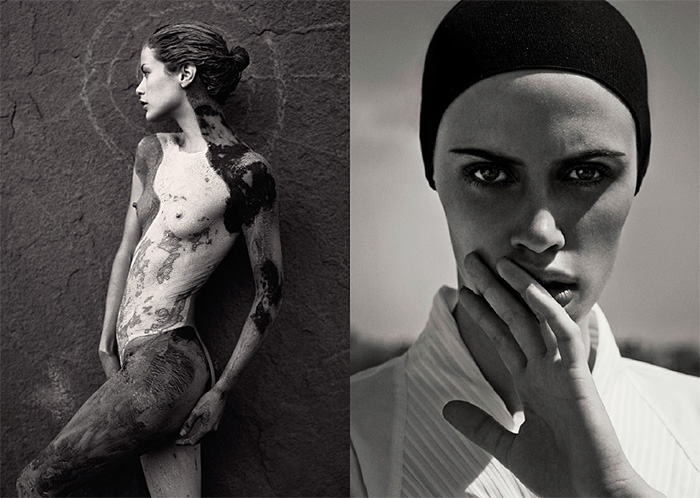
©Kelly Klein, (left) Carolyn Murphy, Sants Fe, New Mexico, 1995; (right) Georgia Hilmer, East Hampton, New York, 2010.
[Check out more wonderful women artists on Musée No. 13]
ANDREA: In your opinion, what makes a good fashion photographer?
KELLY: It’s hard to be a really good fashion photographer. I think it’s just brilliance. It’s brilliant to be able to be so creative and technically tweak that image perfectly between all the hair, makeup, clothes, set, lights—what you’re trying to get across and the concept you have before you even start shooting the image. It’s a real gift. Blumenfeld and Craig McDean, they are really talented. They live and breathe fashion.
ANDREA: What do you think has been the most influential element, or experience in your life, that has made you who you are?
KELLY: I’ve been influenced by so many people, movies and actors even. But you know, I would say Calvin has been a huge influence on me and the way I see things. He’s taught me a lot about how to make good choices in life. I also get inspired by directors and businessmen, the way they work and make business choices. I don’t think there’s anything wrong with being inspired by others. Just being around people like Barry Diller and Bruce Weber, among others, helped me. I remember once watching Weber’s shoot and I was like a sponge, absorbing everything. If you can just pick up a little from all the people around you, it’s pretty empowering.
ANDREA: You donate all of the proceeds of your photography books to various charities. Is there a specific charity that Photographs will benefit?
KELLY: Yes, this book is going to God’s Love We Deliver. I donate all my profits from the books and I choose a different foundation for every one of them. But the interesting thing about this book is that people already want to buy photographs from the book, even though I’ve never had a gallery, or agent, or anything. I thought, “Usually I like to donate pictures, but now people want to buy them.” Surely, I won’t stop donating; but slowly I will start selling photos if someone wants to buy them.
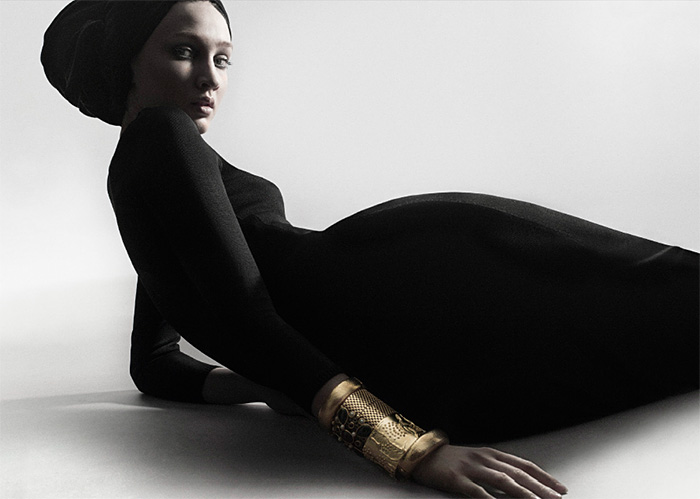
©Kelly Klein, Anna Barsukova, New York City, 2006.
ANDREA: In the past, you were an avid fan of your Instamatic snap camera. Now, you appear to be quite active on Instagram—the iPhone swapping out the Instamatic. How do you feel about art and photography presented on social media? What influence, if any, do they have on your approach to taking pictures?
KELLY: I use Instagram everyday to capture things as my day goes by that I find interesting, beautiful, or inspirational. I like Instagram more than Facebook because it’s just about pictures and not so much about words. I am a big supporter of social media. I don’t take my real cameras out much anymore. The iPhone makes it so quick and easy.
ANDREA: You speak openly and fondly about your son, Lukas. What does he think about your work? What impact, if any, do you hope your images will have on him?
KELLY: I’ve been photographing Lukas since he was a baby. Every six months, he comes into my studio and I shoot full-on portraits with lights, and the set up, and everything. In the beginning, it was torture. He didn’t understand anything. He didn’t like the lights. He didn’t like the camera and he didn’t like being told anything. Now, he is almost eight years old, someone who has become fond of coming to the studio and getting pictures taken. All I can say is one day, I hope he picks up a camera. So far, he hasn’t—but, one day. I give him the camera sometimes, but it’s like giving a wild horse a camera.
ANDREA: In a 1992 NYT’s article, you were quoted saying, “I am Calvin’s muse.” Who is your muse?
KELLY: Georgia O’Keeffe.
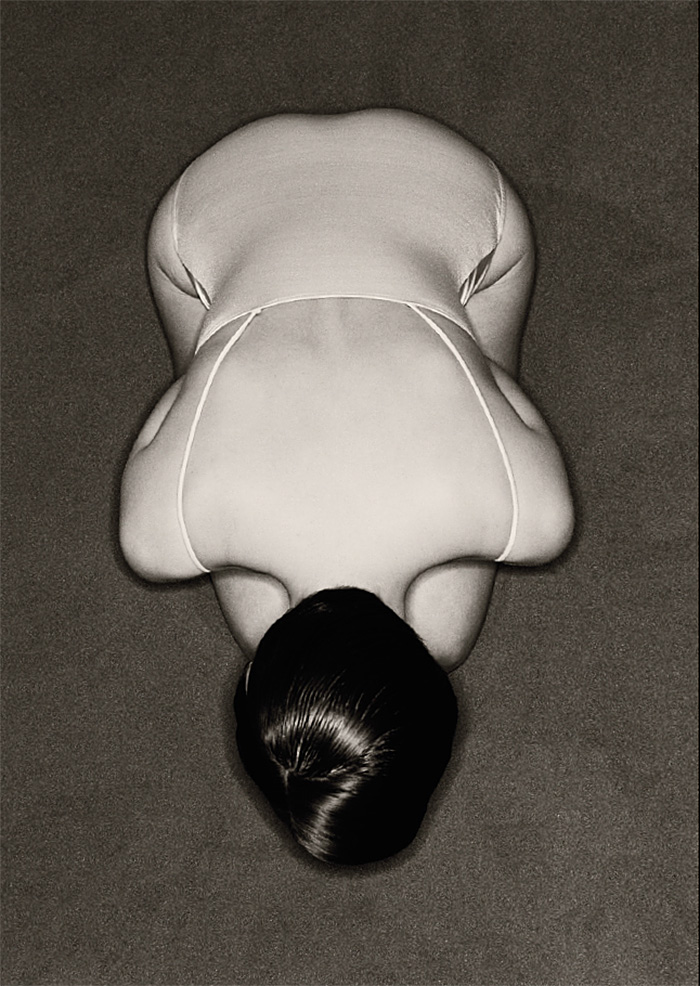
©Kelly Klein, Bathing Suit, New York City, 1995.
ANDREA: If you were not in the business of fashion and photography, where could you contently see yourself? Why?
KELLY: I think it would be architecture, or interiors of some sort. I love landscape design.
ANDREA: What ideas are you throwing around for future projects?
KELLY: I don’t think much into the future. I’m one of those people who live in the moment. Even the books are usually five years apart. I don’t plan my next book immediately after the first.

©Kelly Klein, Monument Valley, Utah, 2010.
Check out more wonderful women artists on Musée No. 13

